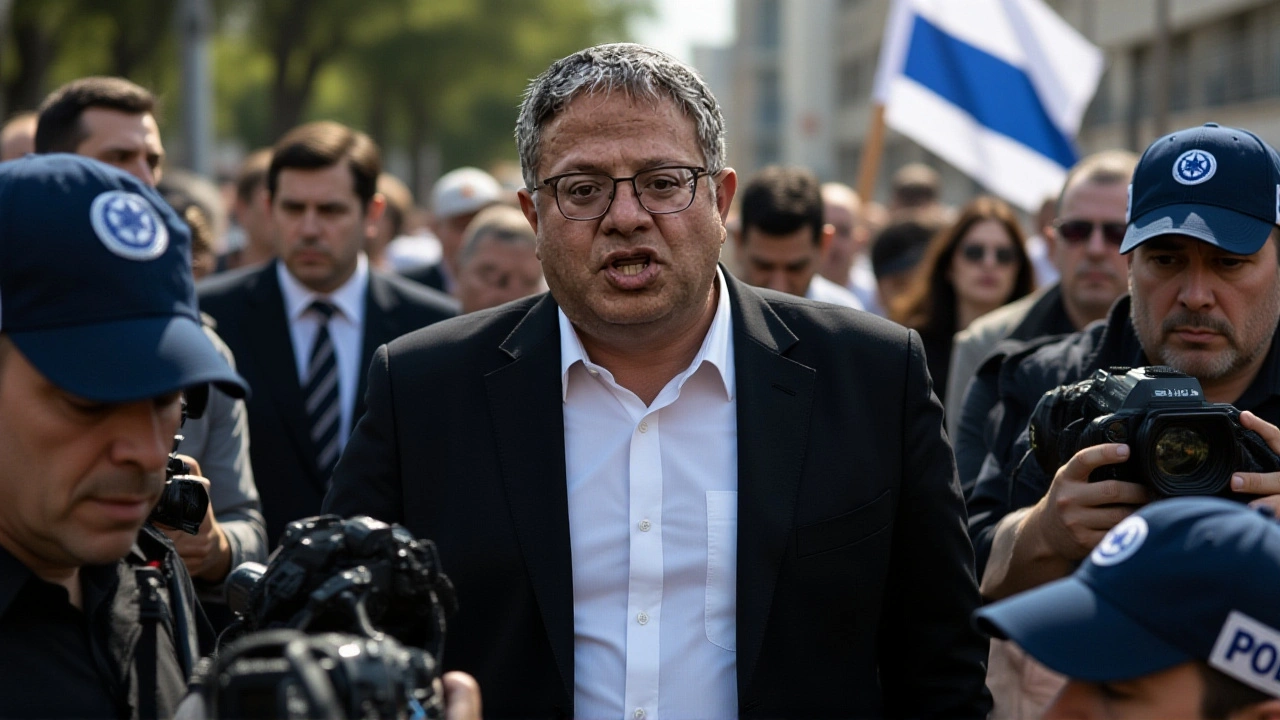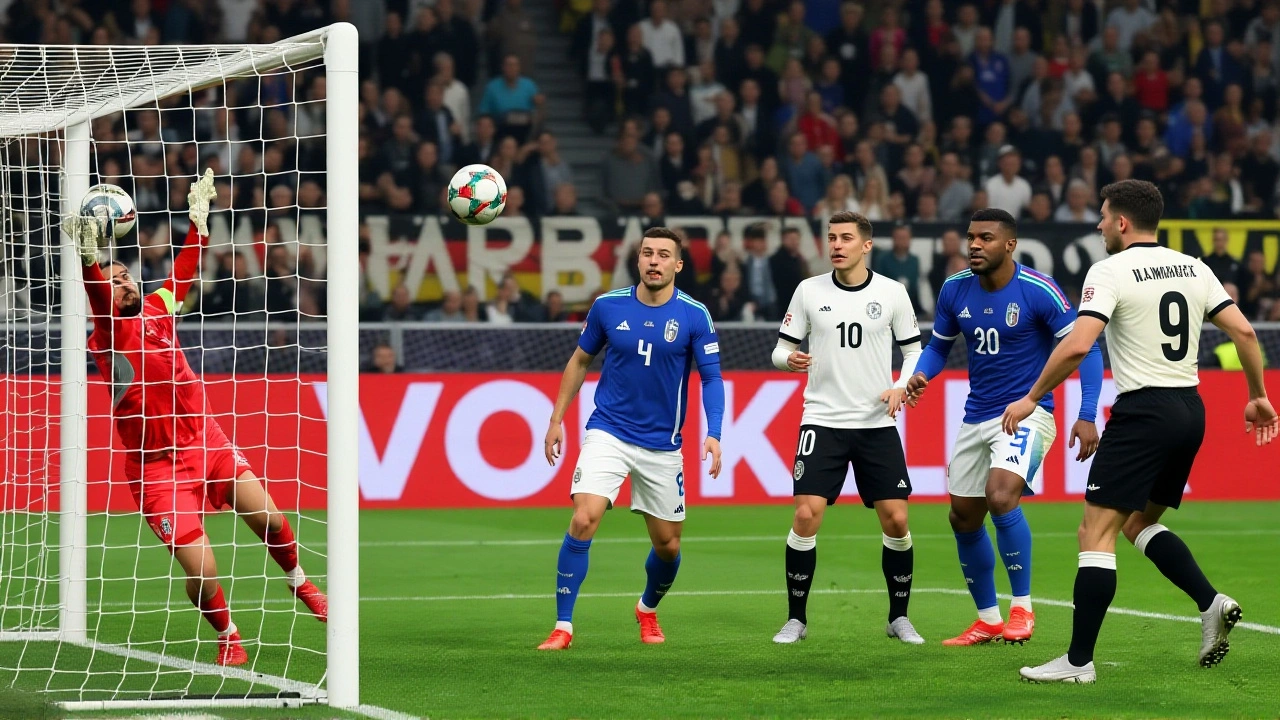When Italy national football team kicked off its campaign for the 2026 FIFA World Cup, hopes ran high across the peninsula. The draw, overseen by UEFA, placed the Azzurri in Group I alongside Estonia, Israel, Moldova and Norway, setting a schedule that runs from March to November 2025. Head coach Luciano Spalletti stressed a pragmatic approach, knowing that every point could be the difference between a direct ticket to North America or a treacherous play‑off route.
Group I Overview
Group I follows the classic double‑round‑robin format: each side meets the others at home and away. The group winner earns an automatic berth at the World Cup, while the runner‑up drops into the second‑round play‑offs, a pathway that has rescued several European giants in past cycles. As of 12 October 2025, Italy sits atop the table with nine points, level on goal difference with Norway but holding the tiebreaker thanks to a superior head‑to‑head record.
Italy's Early Results
The Azzurri's opening match came against Moldova national football team on 9 June 2025 at the Stadio Atleti Azzurri d'Italia in Verona. A 2‑0 win, courtesy of goals from forward Alvaro Villalba and midfielder Giacomo Raspadori, set a calm tone. A preceding friendly against Norway on 6 June yielded a 1‑1 draw, a result that raised eyebrows but also highlighted defensive solidity.
Mid‑Campaign Highlights
September proved the most entertaining month for Italian fans. On 5 September, Italy thrashed Estonia national football team 5‑0 at the Stadio Atleti Azzurri d'Italia. Striker Gianluca Scamacca grabbed a hat‑trick, while Frattesi added a brace. Three days later, the Azzurri embarked on an electrifying 4‑5 away victory against Israel national football team in a match that swung back and forth until the final whistle. Israel led 4‑2 with eight minutes left, but Italy responded with three goals in quick succession, showcasing Spalletti’s attacking philosophy.
Elsewhere in the group, Norway showed intent by crushing Moldova 5‑0 in a match that drew just over 9,000 spectators. Israel edged Estonia 2‑1 in a tightly contested game, while Norway secured a 4‑2 away win at Israel’s venue, thanks to contributions from Erling Haaland (who joined the Norwegian side on loan for the qualifiers) and budding talent Møller Wolfe. These results have kept the group dynamic, ensuring that Italy cannot afford any complacency.

Upcoming Fixtures and What They Mean
Italy’s calendar now narrows to three pivotal encounters. On 11 October, the Azzurri travel to Estonia for a match whose outcome remains unsettled; a win would cement a six‑point cushion over Norway. The home fixture against Israel on 14 October follows a dramatic away victory and offers a chance to avenge the earlier 1‑1 draw in the friendly earlier in the year.
November brings the season‑ending challenges: a trip to Moldova on 13 November, a game that could be a formality if Italy maintains its lead, and finally a showdown with Norway on 16 November at the iconic San Siro. Should Norway close the gap, the final match could turn into a de facto title decider, echoing the 2018 qualifiers where Italy’s fate hung on the last day.
Historical Context and Stakes
Italy’s World Cup pedigree is enviable: four championships and three runner‑up finishes. Yet the last two cycles have been fraught. In 2018, the Azzurri failed to qualify, a national shock that led to a reshuffle of the coaching staff. The 2022 edition saw Italy exit at the round of 16, a disappointment that fueled calls for a tactical overhaul. Spalletti, appointed in 2023, has been tasked with restoring the nation’s footballing pride while adapting to a more fluid, high‑pressing style that modern football demands.
The expanded 48‑team format for the 2026 tournament, co‑hosted by Canada, Mexico and the United States, adds another layer of intrigue. Direct qualification guarantees a spot in a market‑rich North American showcase, while the play‑off route would pit Italy against a potentially dangerous European opponent, extending the campaign into March 2026.

Expert Analysis
Football analyst Gabriele Marcotti notes that Italy’s defensive rigidity, combined with a newly minted attacking trio, gives them an edge in a group where goal difference could be decisive. "The Azzurri have shown they can score in bursts and protect a lead," Marcotti said on his radio show on 9 October. Conversely, former Norway striker John Carew warns that Norway’s own resurgence, driven by a mix of seasoned veterans and emerging stars, means the final encounter will be a genuine test of temperament.
From a statistical standpoint, Italy currently boasts a +12 goal differential, the best among all UEFA groups at this stage. Their possession average sits at 58%, slightly higher than the group’s mean of 53%, reflecting Spalletti’s intent to control play rather than sit back.
Key Facts
- Group I members: Italy, Estonia, Israel, Moldova, Norway.
- Italy’s record (as of 12 Oct 2025): 3 wins, 1 draw, 0 losses.
- Top scorer for Italy: Gianluca Scamacca (5 goals).
- Final group matches: vs. Moldova (13 Nov, away) and vs. Norway (16 Nov, home).
- 2026 World Cup hosts: Canada, Mexico, United States.
Frequently Asked Questions
How does Italy’s current standing affect its chances of direct qualification?
Italy sits atop Group I with nine points and the best goal difference, meaning a win in the remaining three matches would secure the top spot outright. Even a slip-up could be compensated by a strong goal margin, but a loss would increase reliance on Norway’s results.
What are the key challenges Italy faces in the upcoming fixtures?
Traveling to Estonia in cold October conditions and retaining focus against a rejuvenated Israel squad are the immediate hurdles. Additionally, the November clash with Norway at the San Siro will be under intense pressure, as both sides will be fighting for the group crown.
Who are Italy’s standout performers so far?
Striker Gianluca Scamacca leads with five goals, while midfield engine Giacomo Raspadori provides creativity and assists. Defensively, centre‑back Leonardo Bonucci’s experience remains vital, anchoring a backline that has conceded only two goals.
What does a play‑off route mean for Italy?
If Italy finishes second, it will join a dozen other runners‑up in a two‑legged play‑off series. Success would still guarantee a World Cup ticket, but it adds extra fixtures in March 2026, increasing injury risk and compressing preparation time for the tournament.
How does the expanded 48‑team World Cup format affect European qualifiers?
With more slots allocated to UEFA, the margin for error is slightly larger, but the direct‑qualification rule remains unchanged: only group winners qualify automatically. The play‑off pathway now includes an extra round, offering a second lifeline for strong but unlucky teams.

11 Responses
Look, Italy's current position isn't just luck – the numbers tell a story. They've scored twelve goals while conceding only two giving them a +10 goal differential that dwarfs most groups. Their possession average sits at 58% a clear sign Spalletti's high‑press is working. The home‑away split is also telling; they've managed a clean sheet in Verona and another at San Siro showing defensive consistency. For a side that struggled in the last two cycles this is a statistical turnaround. Keep an eye on Scamacca his five‑goal haul already puts him in contention for the group’s top scorer. If the Azzurri can maintain this efficiency the play‑off route becomes a mere footnote.
It is incumbent upon any true supporter of Italian sovereignty to recognize that the Azzurri's recent performances are not merely a product of fortunate circumstances; they are the manifestation of a disciplined, nationalist ethos that demands excellence. The tactical adjustments introduced by Coach Spalletti embody a renewed vigor, a commitment to defending the honor of Italy on the international stage. One must lament the complacency that plagued previous campaigns, yet rejoice at the resurgence evident in the disciplined defensive records and the clinical finishing displayed against Estonia. Let us not forget the historic weight carried by the tricolour, and may this resurgence serve as a clarion call to all who cherish the grandeur of Italian football.
From a systems‑theory perspective, Italy's current qualifying trajectory reflects a high‑efficiency tactical schema, characterized by an elevated possession index (58%) and a favorable G/GA ratio (+10). Their phase‑transition moments, notably the 5‑0 dismantling of Estonia, illustrate effective spatial compression and pressing zones, which aligns with modern high‑press paradigms. Moreover, the squad's offensive output, with Scamacca contributing five goals, enhances their expected goals (xG) metric considerably above the group mean. Defensive continuity is reinforced by a low shot‑against per 90 metric, underscoring the backline's structural integrity. In sum, the quantitative indicators corroborate the qualitative observations of an Azzurri renaissance.
One must ask, in the grand tapestry of sport, what does it signify when a nation steeped in history begins to waver? The answer, dear readers, lies not merely in the tally of goals, but in the moral fiber that underpins each pass, each tackle, each fleeting moment of brilliance; for Italy's quest is a microcosm of a broader existential dialogue, a lamentation on the nature of triumph and the abyss of complacency. The very act of qualifying, of standing atop a table, becomes a philosophical inquiry into purpose, into the collective soul of a people yearning for renewal; and yet, the specter of past failures hovers, reminding us that glory is a fragile construct, ever‑susceptible to the erosive forces of doubt. Thus, as the Azzurri march toward San Siro, let us contemplate not only the medals that may glitter, but the virtues that must be reclaimed, lest the triumph be but a hollow echo in the annals of history.
Indeed, the recent fixtures have demonstrated a commendable level of tactical discipline; the defensive organization, in particular, merits recognition. It is hoped that this form will persist as the campaign progresses.
Italy looks good but they need to keep pushing. Some matches were easy, others not.
Absolutely! It's wonderful to see the Azzurri representing the rich tapestry of Italian culture on the global stage; the fans, the history, the passion-all intertwined. Let’s celebrate this momentum together, and may the spirit of unity continue to guide them to success.
Great job, Italy! Keep the momentum going 💪😊. The team's work ethic is inspiring, and the fans are right behind them. Let’s stay positive and support every match! 🌟
The current state of Italy's qualification campaign presents a fascinating case study in modern football dynamics, one that warrants a thorough dissection beyond the superficial headlines. Firstly, the statistical uplift-an impressive +10 goal differential-constitutes a quantitative hallmark of dominance, yet it is imperative to contextualize this within the qualitative fabric of the squad's evolution. The emergence of Scamacca as a prolific finisher underscores a strategic pivot toward a more diversified attacking portfolio, moving away from an over‑reliance on historic figures. Moreover, Spalletti's implementation of a high‑press framework aligns Italy with the prevailing tactical zeitgeist, mirroring the pressing intensity observed in elite clubs across Europe. This systemic shift is not merely cosmetic; it reflects a deeper assimilation of data‑driven methodologies, wherein expected possession (58 %) and progressive passes per 90 have risen markedly, indicating a deliberate attempt to control tempo. Concurrently, the backline's resilience-conceding merely two goals-exemplifies a synergistic relationship between defensive pragmatism and transitional efficiency. Such balance is seldom achieved without meticulous squad rotation and a judicious blend of experience and youth, as evident in Bonucci's mentorship of emerging defenders. However, one must temper optimism with caution. The upcoming fixtures against Estonia and Israel constitute potential volatility, given their recent performances and capacity for rapid counter‑attacks. The psychological dimension-particularly the weight of historical expectations-could impose a latent pressure that subtly erodes composure in high‑stakes moments. Furthermore, the looming clash with Norway at San Siro represents a litmus test for adaptability; Norway's physicality and aerial prowess could destabilize Italy's high‑line, demanding tactical recalibrations. In summation, while the Azzurri's trajectory appears auspicious, the path to automatic qualification remains contingent upon sustained tactical acuity, squad depth, and mental fortitude. Any deviation could relegate them to the play‑off labyrinth, a scenario that, though survivable, would undeniably complicate their World Cup preparations.
The analysis is thorough yet the conclusion remains uncertain; Italy must maintain performance levels.
Sounds good 😎